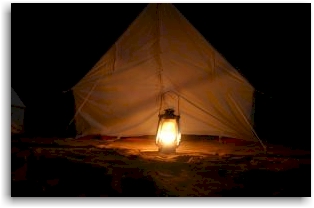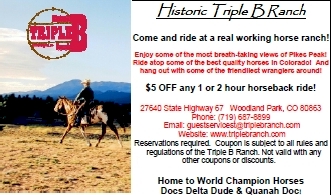Official Website of The Teller County Vacation & Visitors Bureau
Tent Camping In Teller County
Minimal Impact Camping Techniques
PLAN your trip, know what it is you wish to experience, think about the time of year and expected weather. This is part of the outdoor adventure and should always be your first step. After you have selected the area you would like to visit, contact the local Ranger District for answers to any questions you might have and to learn about any special regulations in the area. When planning where you are going to go, be sure you are on National Forest Service System land. CONCENTRATE your impacts in heavily used areas. Many of the areas that are easily accessible receive heavy use during the summer months. If there is an existing fire ring, do not build a new one. (Sometimes that means that you will have to clean out the old fire ring; don't forget that collapsible shovel). We all have to do our part to keep these areas open for folks who prefer this type of experience.
CONCENTRATE your impacts in heavily used areas. Many of the areas that are easily accessible receive heavy use during the summer months. If there is an existing fire ring, do not build a new one. (Sometimes that means that you will have to clean out the old fire ring; don't forget that collapsible shovel). We all have to do our part to keep these areas open for folks who prefer this type of experience.CAMP at least 200 feet from water. This practice is important for a variety of reasons. A campsite located on stream banks or lake shores can create visual impacts and detract from the sense of solitude. Accordingly, it is also important that you camp far enough from roads and trails that the site is screened from other campers. By camping close to water you risk contaminating the water. Remember, water is very important to the wildlife that live in the area, they need easy access to and from water sources and your presence may disturb their normal behavior.
PACK IT IN, PACK IT OUT. Dispersed areas do not have trash services and rarely receive clean-up services. Please do not put glass or aluminum (even those food packages that appear to be made of paper often have foil liners that do not burn) into the fire. This practice is unsightly and makes the site less attractive to the next user. All food scrapes and trash should be taken home with you, or take it to the nearest landfill if you are on a long journey.
PROPERLY DISPOSE of Human Waste. This is not something you were taught in school, maybe it should have been. Human feces not properly disposed of is not only unsightly, but can actually create health hazards. Catholes are the most widely accepted method of backcounty human waste disposal (again, that collapsible shovel comes in handy).
1. Select a site that is far from any water sources, 300 feet is a good, safe distance. The site should be inconspicuous and where someone would not naturally be walking. If you are camping with a large group or camping the same site for more than one night, you should spread the cathole sites over a large area. Try to find a spot with deep organic material, which will help decompose the feces. If possible, locate your cathole where it will receive maximum sunlight, this will also aid in decomposition. Chose an elevated site where water would not normally pool.
2. Now you are ready to dig. Your hole should be 6-8 inches deep and 4-6 inches in diameter. If you hit a rock or root which prevents you from reaching the correct depth, you should find another site (early planning comes into play). Toilet paper is a strong attractant to small rodents and should be packed home with you other trash. When finished, the cathole should be filled in with the previously removed dirt and disguised with native materials.
CAMPFIRE BUILDING and wood collection. Campfires were once thought to be a necessity and are built in history and tradition. Attitudes toward campfires are changing. The new perception of their use is a direct result of past misuse of campfires, and the sometimes ugly and negative impacts caused when fires are built incorrectly, built in the wrong locations or left unattended. If you choose to have a campfire, you are choosing a very large responsibility.
1. Your first step is to choose a location for your fire. If there is an existing fire ring, use it. If it is a bad location, move it to a better location and clean up all remnants in its original location. Never place a campfire within the radius of the largest branches on a tree. Fire can actually travel through the tree's root system and cause a forest fire. Never build a fire close to a rock or other natural object where the fire will scorch the object and leave lasting impacts of your visit.
2. Next, you will need to collect firewood. There is only one type of wood that is acceptable for building a low impact campfire; this is dead and downed wood. Breaking branches off of a live standing tree leaves a very discernible and long lasting impact. Firewood size is very critical. A good rule of thumb is if the wood is too large to break with your hands or by stepping on it, then it is too large to burn. Keep the firewood in its natural lengths, breaking into smaller pieces as you feed the fire. If there is any unburned wood left when breaking camp, it can be scattered around the forest and will blend in naturally.
3. Finally, remember to clean up after your fire. The intent is to get other campers to use the same fire ring. Cleaning up the fire ring of any food waste and trash, burning wood completely and scattering the cooled coals and ashes will make it more likely that it will be used again.
Helpful Tips
BEARS - Help keep bears alive AND in their natural habitat! When you go to the mountains and forest, you are in bear county. Do not leave ANY food, refuse or other bear attractant unattended. It is prohibited by Special Order. Unless food is being eaten, prepared or transported/store it in bear resistant containers.KEEP THE FOREST WILD - Help the wildlife stay wild!
The wild animals in National Forests are part of an intricate web of life. When we feed these animals, we alter this natural balance. Unnaturally high populations may be created. The animals, ability to find food in the winter--when visitors are gone--may be damaged. We can be affected too. Animals sometimes bite and some of them are infected with rabies or fleas which spread bubonic plague. Help to protect the wildlife and yourself. Show them the respect they deserve and let the animals find their own natural food.
NOXIOUS WEEDS
A noxious weed is any non-native plant that grows unchecked by natural enemies, like insects or diseases. Noxious weeds displace native plants, thereby robbing wildlife and livestock of natural food sources and nesting sites. They steal water and nutrients from native plants and disrupt the ecosystem. Some are harmful or fatal to animals. Contact your local Forest Service Office, County Extension Office or County Weed Control Office to obtain more information on recognizing, eradicating and preventing the spread of noxious weeds where you live, work and/or play.
HIGH ALTITUDE
You may notice that your breathing is faster or deeper and you may feel short of breath, especially when you exercise. This is the body's first and most effective response to altitude. Your heart is likely to beat faster also; this too is a helpful, normal reaction. Once you arrive, take it easy for the first day of two. Reduce consumption of alcohol, caffeine and salty foods. Drink more water than usual. Altitude illness feels very much like flu or a hangover, but is much more serious. Do not push. If you feel worse or the symptoms do not go away soon, get medical help!
SUNBURN
The sun has more power in the thin air, and a bad sunburn can spoil your stay. No matter how tanned you may be, use a protective cream. "Cold sores" are aggravated at high altitude but might be prevented by a medicine which your doctor can prescribe. Sunburn of the eyes is a real danger, even on foggy or cloudy days. Wear sunglasses or goggles with ultraviolet protection.
TICK/FLY SPRAY RECIPE
2 cups white vinegar
1 cup Skin-So-Soft bath oil
1 cup water
1 Tablespoon eucalyptus oil (available at drugstores & health food stores)
This homemade spray does not contain aerosols to pollute the environment, nor chemicals to contaminate the ground and it works. We have reports of successful use on animals as well.
| Activity Quick Links | Discounts & Promotions | |
|
Sign up to receive Teller County's eNewsletter full of specials, discounts, event news, along with great vacation & get-away ideas. 










